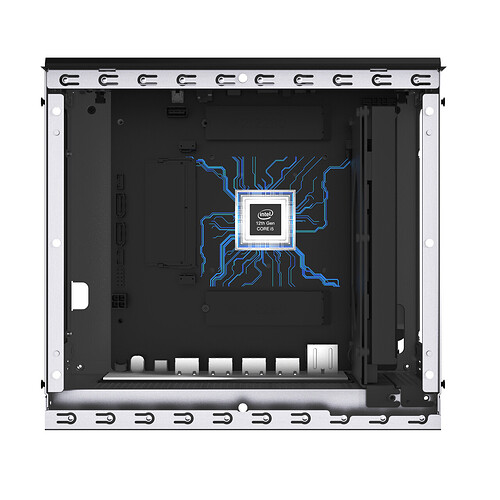ZimaCube - Breaking Through Our Previous Ideas: Three Years of Progress (1)
Hello everyone, this is Lauren, founder of IceWhale. With the upcoming release of ZimaCube, I have a myriad of thoughts, so I decide to write something down and share with you. Entering our third year, we’re excited to unveil ZimaCube - which we believe will make an impact beyond normal personal home servers. This column delves into the story behind ZimaCube, while also incorporating elements of my personal reflection and contemplation.
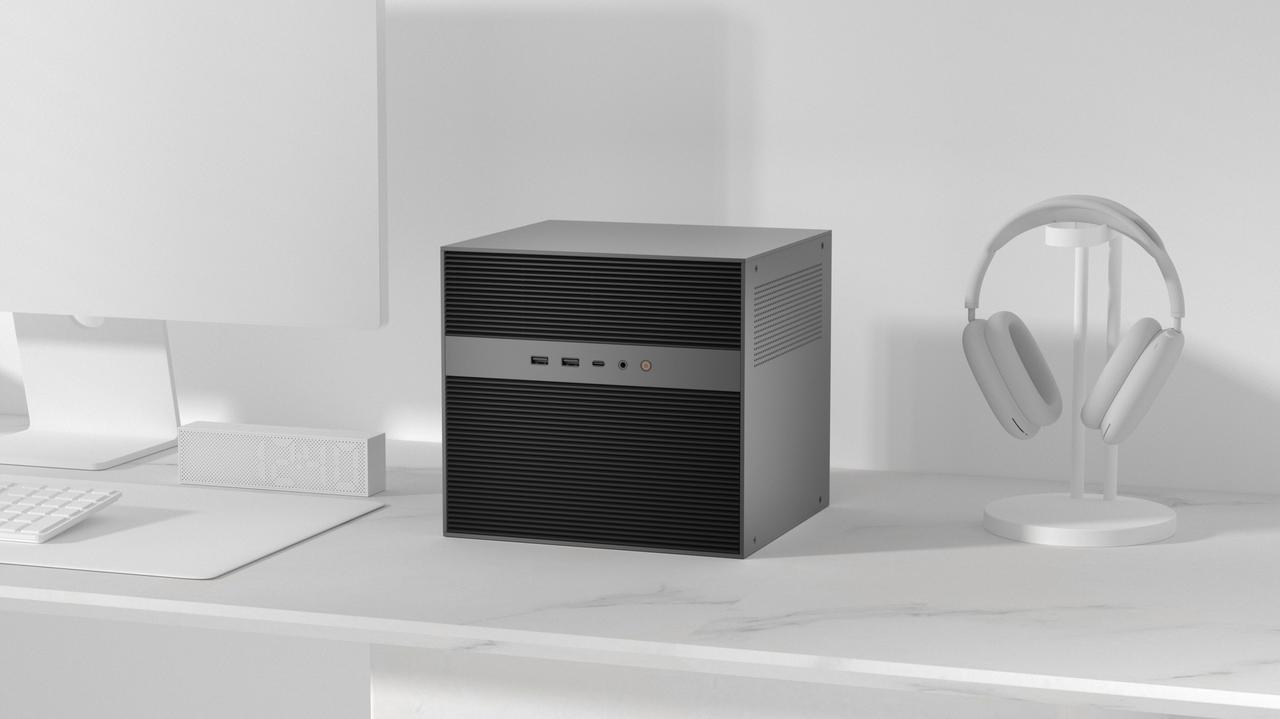
【Subscribe For More Info of ZimaCube】
Year 3: Learning, Practicing, and Evolving
It is my utmost pleasure to present this update to you, the esteemed reader. Today, I vividly recall our endeavors during the ZimaBoard Kickstarter campaign in early 2021 when I stood before the camera, awkwardly expressing our imagination concepts of the future of personal servers. The trepidation, anxiety, and uncertainty surrounding user reception were palpable; yet so too were the exhilaration and anticipation of boundless possibilities that lay ahead. I still remember the scene we meticulously scrutinized each frame captured by ZimaBoard’s lens. Because of the lack of sufficient funds for extravagant venues or professional actors, we had to rely on a friend’s creative studio, an underground garage. All shootings were conducted there and nearby shared spaces.
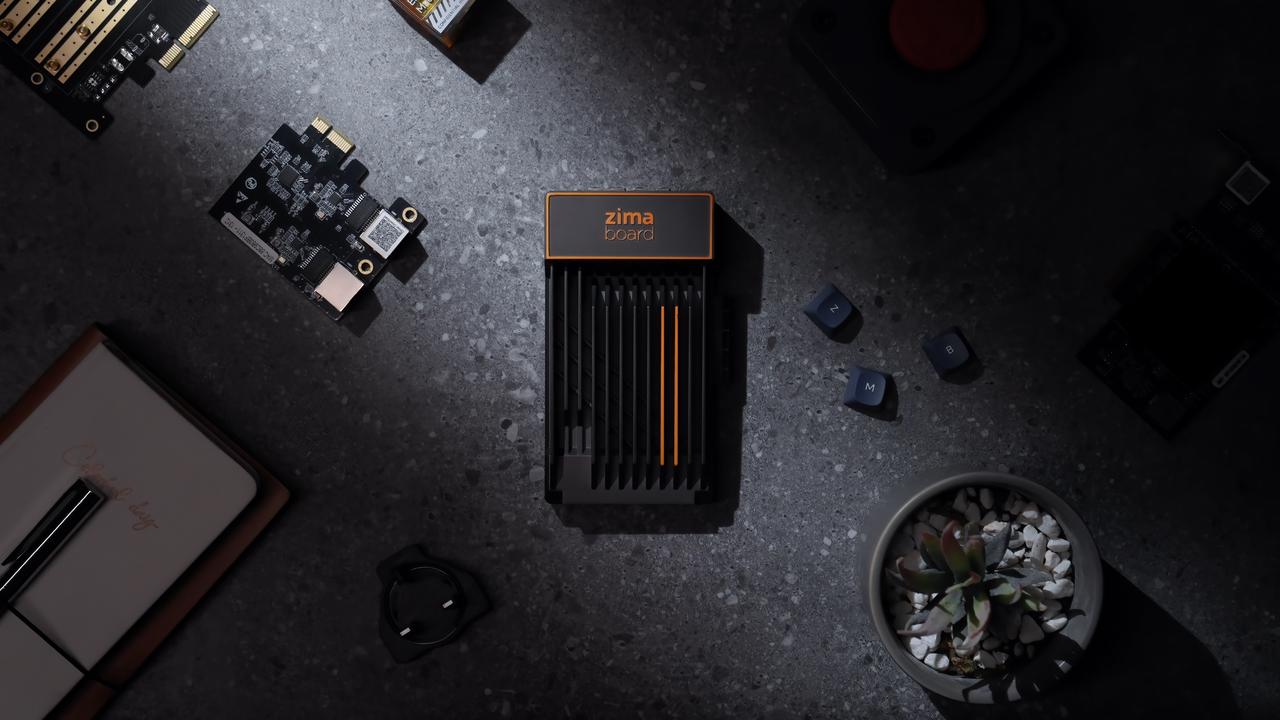
In 2022, CasaOS was developed in alignment with our core philosophy of exploring the personal server scenario. Initially, we merely believed that the existing self-hosting system could be transformed into something entirely different. However, over the past year and a half, driven by the collective efforts of our community members, we have been tirelessly constructing and envisioning an ideal personal server system.
Throughout this journey, we have remained dedicated to continuous learning and have nurtured a deep respect for the industry we operate in. This profound admiration is evident in the version 0.4 of CasaOS, where you can truly feel our unwavering commitment.
Yet, never in our wildest dreams did we anticipate the remarkable achievement of CasaOS receiving over 15k stars on Github. While we may not possess the explosive popularity of those hyped-up projects, we have steadily advanced on our own path, which is characterized by determination and a firm belief in the value of what we’re creating.
Within the shadows of uncertainty, we persistently explore, seeking that elusive glimmer of light. CasaOS is our beacon, and with each step forward, we draw closer to the realization of our vision— a personal server system that empowers individuals and revolutionizes the way we host and manage our digital lives.
ZimaCube encapsulates the culmination of our team’s three years of learning, collaboration, and knowledge exchange within the community, market, and industry leaders. It is a comprehensive presentation that showcases the capabilities of the Zima team in 2023.
Something Worth Exploring
When conducting research, we discovered that the NAS industry has a history of over 20 years. Synology, QNAP, Western Digital, and other manufacturers are renowned brands in this field. However, compared to the rapid development of the internet, NAS seems to have progressed at a slower pace with limited new entrants promoting further advancements in the product.
Stepping outside of the NAS industry and examining these past decades reveals that IBM’s standard set in 1981 for personal PCs defined labor division and product framework from various dimensions such as interface, structure, and architecture. This had a profound impact on computers and personal PCs. Apple has also showcased numerous innovations during the iPod era by integrating hardware and software through iTunes, minimalist design elements, and Click wheel interaction - revolutionizing consumer experiences within portable player categories. Additionally, Internet cloud storage solutions like Dropbox, Google Drive, and iCloud emerged alongside the rise of mobile internet connectivity - facilitating seamless creative collaboration processes anytime and anywhere. These remarkable innovations have significantly influenced our lives.
The convenience experienced through these advancements is so compelling that people are willing to tolerate slower transfer speeds compared to local networks while accepting data being transferred to someone else’s computer before downloading it back onto their own devices. Furthermore, individuals accept higher annual costs associated with mass storage despite exceeding hard drive or SSD expenses due to its powerful capabilities, which have led them to acquiesce challenges related to data security and privacy.
In the past two decades of remarkable hardware and software innovation, the NAS industry has remained aligned with a three-year cycle of incremental changes, accompanied by daily software upgrades, steadily advancing within its established framework. However, I believe that it has the potential to undergo a complete transformation. IceWhale aims to infuse this market with fresh vitality. Taking into account the post-2023 pandemic landscape, we seek to reevaluate the novel value and possibilities that personal servers can offer in terms of data management, collaboration, and privatized AI within the realms of data utilization, creative workflows, and development for individuals, families, and small organizations.
Hardware, the Foundation of it All
Yes, the first step is to redefine the hardware itself. The first question to address is the number of drive bays. In the mainstream market, there are over five options ranging from 2-bay to 8-bay, resulting in a wide range of SKU numbers and significant price differences. However, the differences in processor performance and user experience among them are not that significant. Therefore, we have chosen to start with the flagship model and create the ZimaCube series.
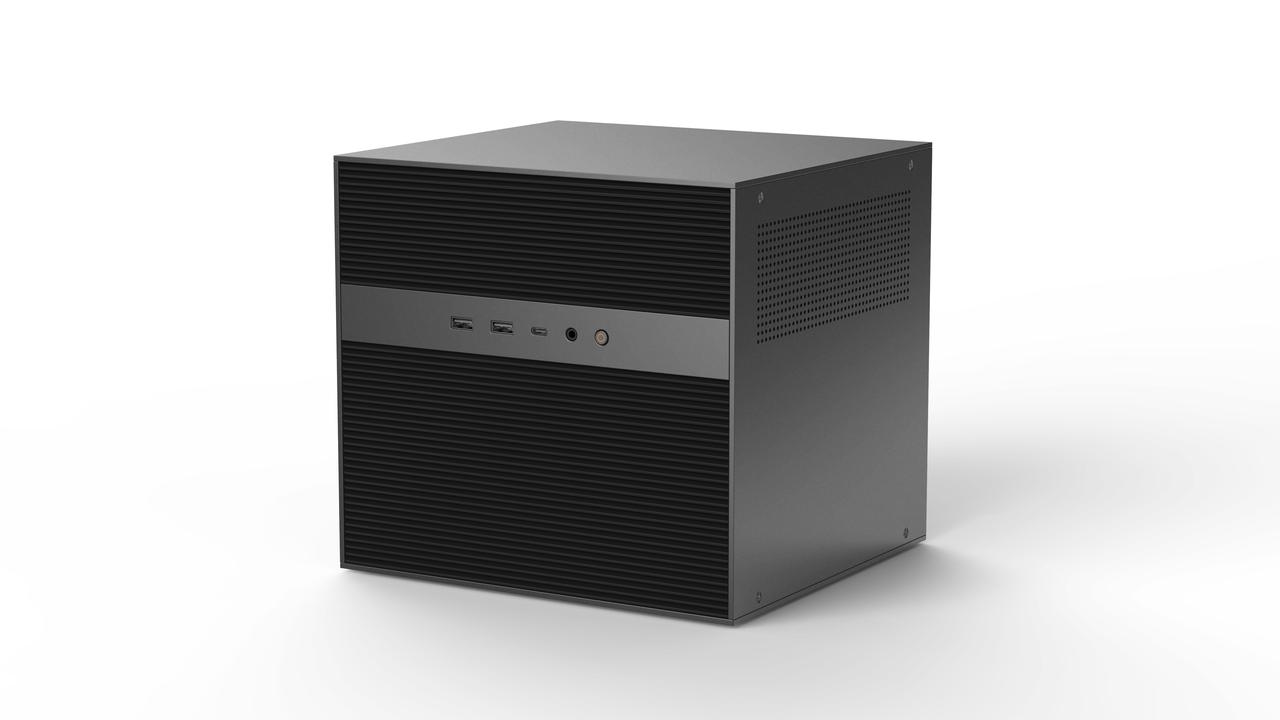
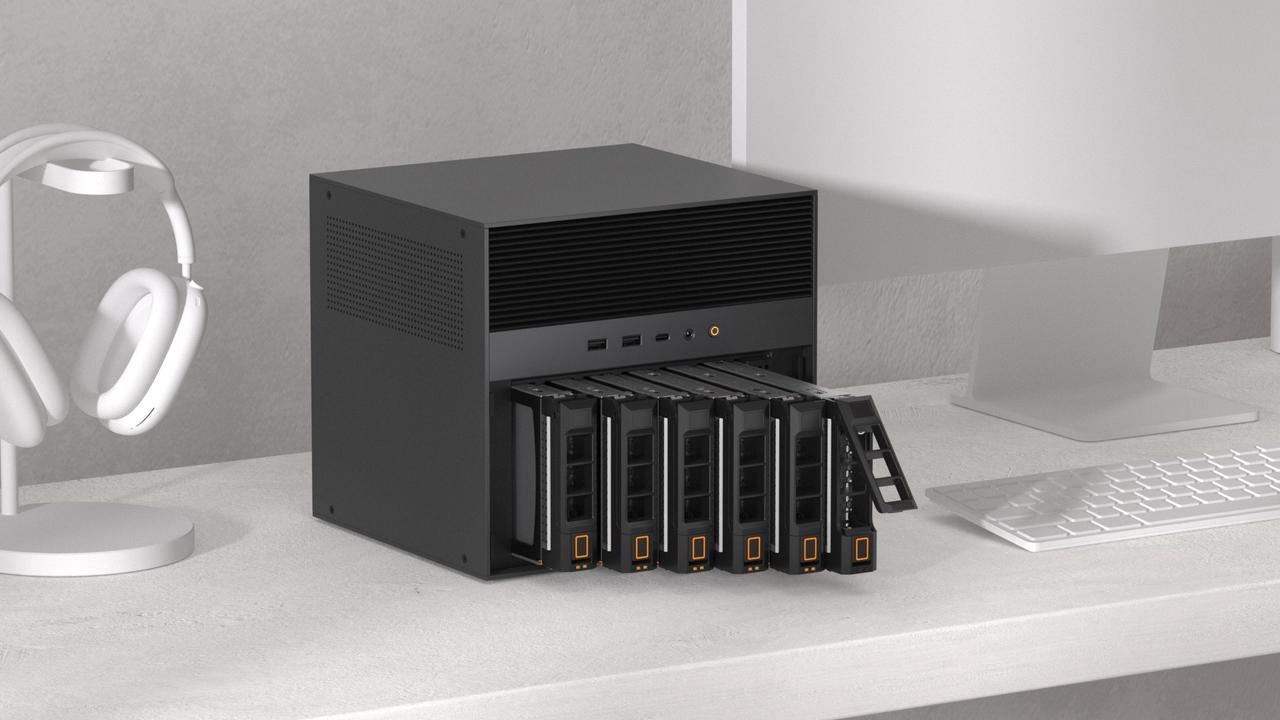
Let’s talk about the processor first. For the ZimaCube model, we have opted for Intel’s latest generation N-series processor. This 12th generation processor excels in power efficiency, performance, and single-core processing capabilities. On the other hand, the flagship ZimaCube Pro model features a 10-core version of the Core i5 processor. This choice provides a significant boost in processing power, allowing you to deploy a wide range of applications, perform web scraping, handle encoding/decoding tasks, and even support virtualization with multiple systems.
When it comes to RAM, the product comes with a minimum of 8GB of memory as the standard configuration. However, you have the flexibility to expand the memory according to your needs by utilizing the SODIMM memory slots(DDR4/DDR5). The ZimaCube Pro model supports a maximum capacity of up to 128GB, providing you with ample space for demanding applications and multitasking scenarios.
The performance of the interface is crucial in the experience and potential of a scenario. The Pro’s USB-C port supports Thunderbolt 4, making it the sole product on the market at its price that adheres to the Thunderbolt 4 standard. Within this context, you can directly transfer data from a portable SSD to a personal server through the maximum speed offered by the C port, or establish a direct connection with a laptop for seamless data transmission and high-speed, large-capacity material loading. Additionally, it is also feasible to expand connectivity options by utilizing various Thunderbolt graphics docking stations, networks, or computing peripherals.
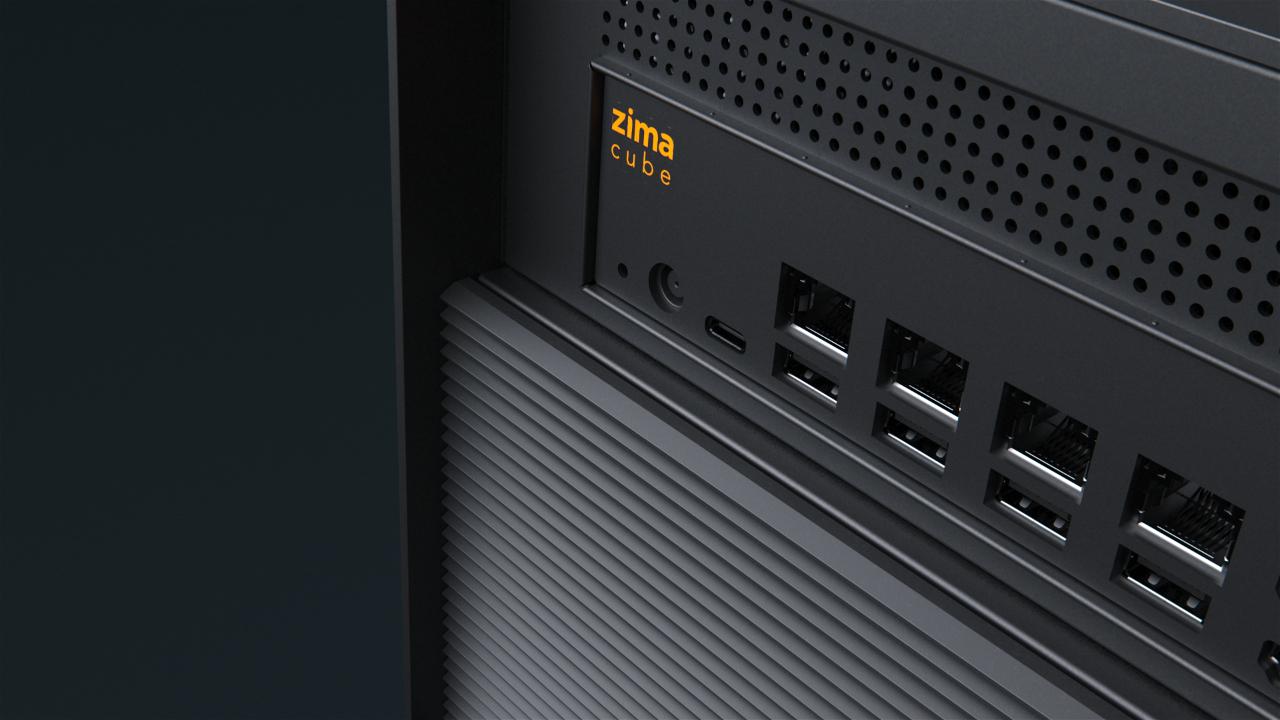
In addition, the motherboard has a reserved PCIe interface, which means that you can expand the gigabit card, multiple built-in SSDS, transcoding cards, or compact GPUs that are half high and half long to suit your needs. In the PCIe specification, ZimaCube has one PCI 3.0 directly, and Pro has two PCI 4.0 built-in. The disassembly and assembly of the expansion card is also very simple. Remove the screws around the top cover and you can directly replace your PCIe expansion card without very tedious disassembly steps and assembly difficulties.
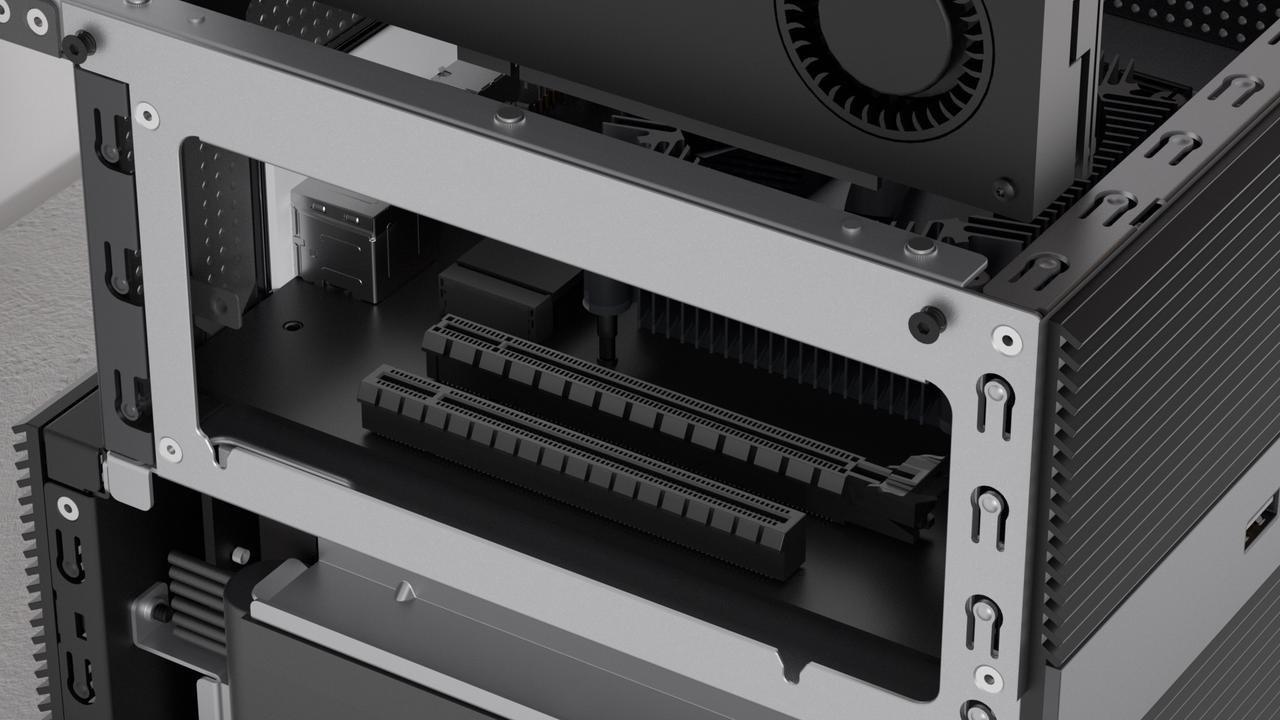
This extensible hardware experience benefits from the modular design. In the structure, the upper part of the whole machine mainly covers the motherboard, NVMe, heat dissipation and PCIe. And the bottom half of the cut out is a hard disk cage, built-in 6+1 storage space module. The design of 6-bay also follows the hardware team’s years of experience in the server field, and pays attention to vibration, heat dissipation and operation stability.
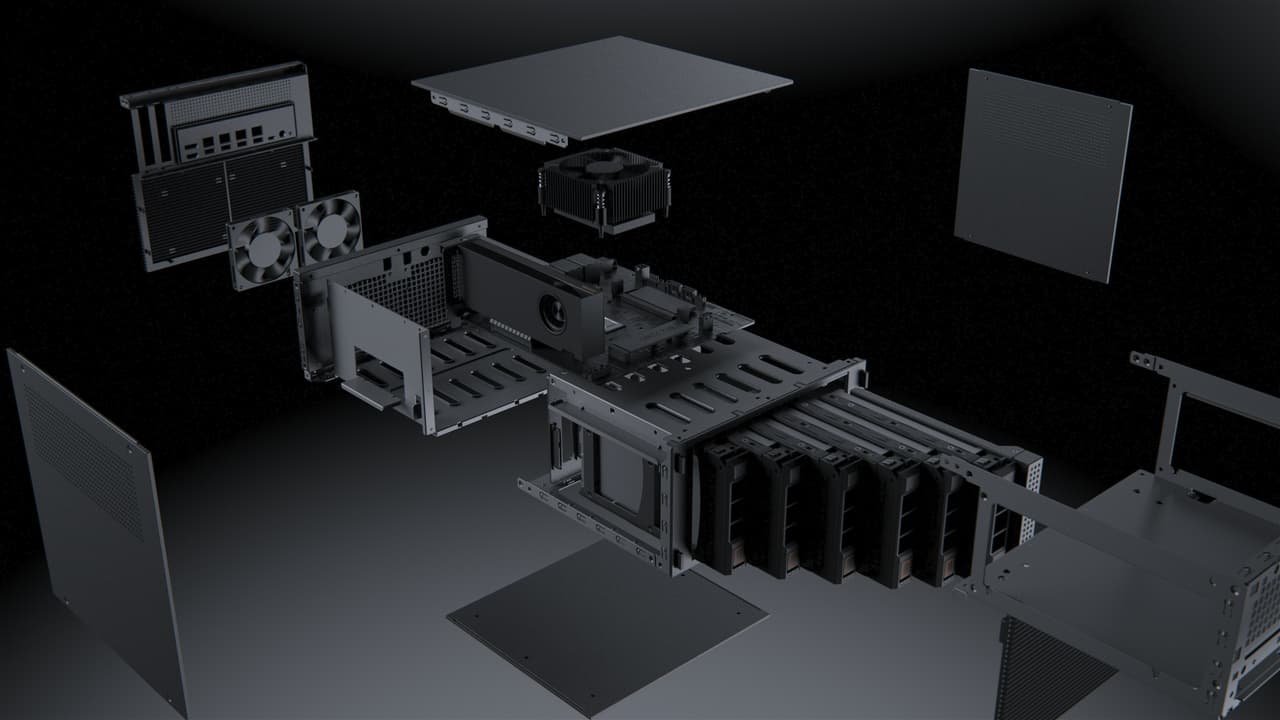
In terms of overall design, ZimaCube maintains our consistent philosophy of being compact and high-quality. While most NAS products opt for plastic casing due to its lower cost and suitability for rack or backend devices, it can sometimes give off a strong sense of cheapness if not handled properly. After multiple discussions, the ZimaCube team decided to choose metal as the material for the casing, utilizing the mainstream anodizing process commonly used in PC manufacturing. When I received the first engineering sample, I was impressed by its excellent tactile feel. We also conducted several comparisons and adjustments to achieve a solid, refined, and steady appearance, with the anodized sandblasted particles meticulously crafted.
Seeking Feedback
In fact, in 2020, IceWhale team made a stackable light NAS module, and many of the design concepts at that time have been practiced in ZimaBlade and ZimaCube respectively. I think 2023 is a very special year for NAS enthusiasts, communities, creative practitioners and industry practitioners. Starting from this year, a batch of new design concepts, product definitions and scene experience will emerge in the market, which are completely different from the early 2000 generation of products. The next generation of products will incorporate new technologies, richer experiences integrated with workflows, and a deeper understanding of data and team assets.
In the next part, I will further share with you a series of software updates and functional designs that have been generated through the feedback of the CasaOS community over the past two years.
You are also welcome to discuss the ZimaCube and ZimaCube Pro hardware in the comments, and the product team will be very responsive to the design and considerations you have pointed out.
Learning, iterating, learning, iterating, learning, iterating will be our only theme.
